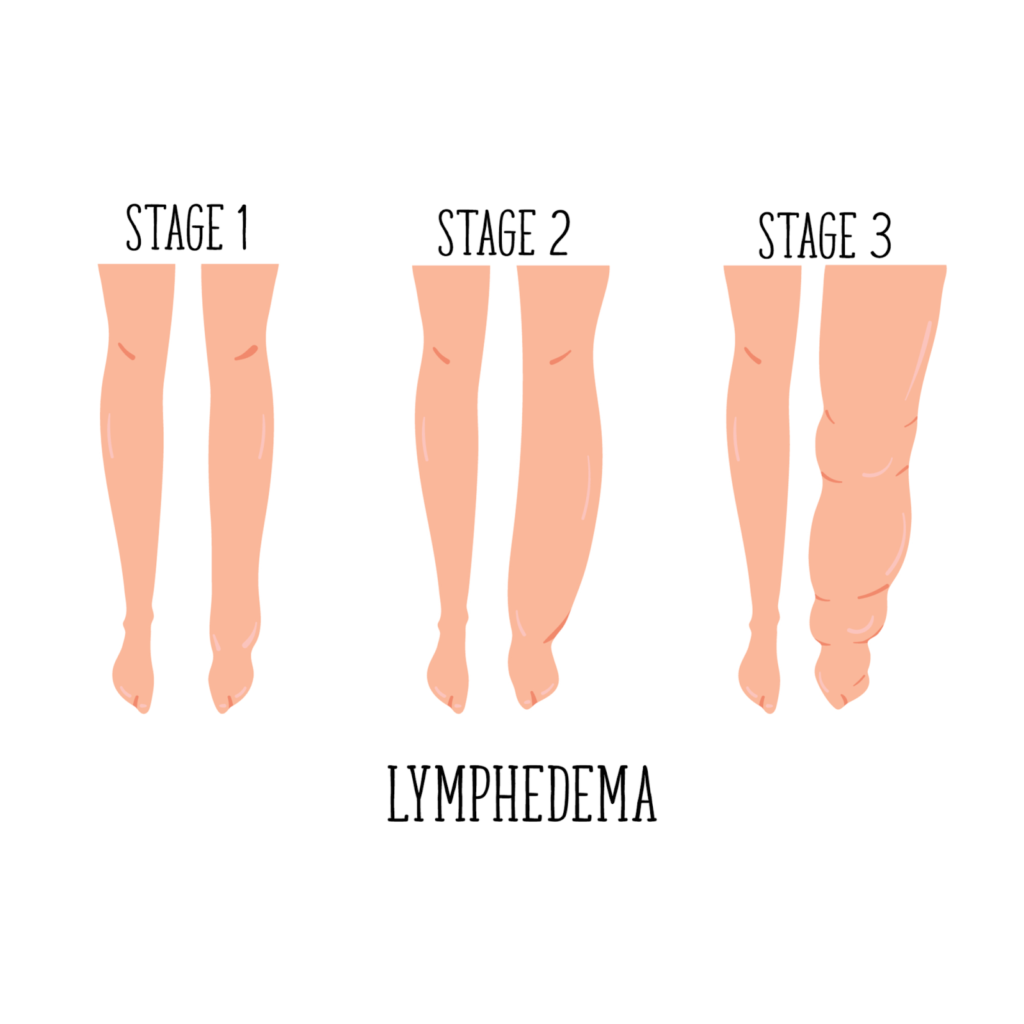Before tackling the issues and symptoms associated with lipedema, it is important to assess your vein health by working closely with a vein specialist. in vein issues and lipedema, both can cause painful, heavy legs, and tenderness, so it can be difficult to know if your symptoms are related to veins or solely to lipedema. An experienced vein specialist can get you on the right path to a diagnosis and treatment plan.
While keeping a close eye on overall health is essential to many individuals, vein health, and how it can be linked to other conditions is easily and often overlooked. Below the surface of the skin, veins and arteries play a vital role in keeping the human body on a healthy and thriving track. Together, arteries and veins are in charge of moving blood successfully between the beating heart and the rest of the body. Where arteries carry oxygen-rich blood away from the heart, veins are responsible for carrying oxygen-depleted blood from the extremities back to the heart for property replenishing and recirculation and play a vital role in the health and function of our lymphatic system. Recent studies have shown that vein problems are the most common cause of secondary lymphedema and that lymphatic injuries can occur after lipedema surgery.
What Is Lymphedema?
Lymphedema occurs when a clear fluid known as lymphatic fluid builds up and causes fluid retention in the soft tissues of your body. Usually, this occurs in the arms and legs. The lymphatic system consists of lymph vessels and lymph nodes. Lymph vessels collect a fluid that is made up of water, fats, protein, and wastes from the cells of the body. Furthermore, lymph vessels carry this fluid to your lymph nodes. After that, lymph nodes filter waste materials and then recycle the fluid to your blood. However, damaged or missing vessels and nodes cause lymph fluid blockage. In this case, they are unable to cycle through your system. In addition, the fluids can create localized fluid retention and cause swelling, known as lymphedema. This usually affects the arms or legs.


Lymphatic Injuries Cause Lymphedema
Injuries to your lymphatic system is the most common cause of lymphedema. Lymphatic injury can occur from chronic venous disease, infection, obesity, and lipedema. Unfortunately, people can develop chronic lymphedema, which can last for the rest of their lives. In addition, chronic lymphedema can be difficult to treat with lymphedema therapy and it increases the likelihood hood contracting an infection. Minor injuries to the skin can cause lymphangitis and infection that spreads through the lymph system. For example, a cut, scratch, insect bite, or athlete’s foot can create a severe infection if you don’t treat it promptly. Moreover, lymphangitis affects the connective tissue under the skin. Additionally, multiple infections can cause scarring that makes the tissue vulnerable to more swelling and infection. On top of that, advanced chronic lymphedema can lead to fibrosis or hardening of the tissue.
What is Lipedema?


Lipedema is a fat disorder, mainly affecting women, that causes an enlargement of both legs due to deposits of fat under the skin. It’s characterized as a “progressive disorder,” meaning it generally gets worse over time. Sufferers living with lipedema experience easy bruising and tenderness, pain in the affected areas, and significant disability in daily life. In severe and more progressive cases, the trunk and upper body may also be affected, including the arms and upper back. Little is known about the disorder, and it’s often misdiagnosed and incorrectly treated as general obesity.
What is Lipedema Surgery?
Lipedema reduction surgery is a spin-off of liposuction focused on the reduction of lipedema tissues including fibrous tissue, fat, and extracellular contents. It is possible for lymphatics to be injured by a suction cannula during lipedema reduction surgery and/or cosmetic liposuction. Some argue whether this is possible, but studies show it can, and unfortunately, may happen for some. So, it is important if you have lipedema, or suspect you may have lipedema that you get a proper diagnosis and work closely with skilled surgeons well-versed in lipedema, lymphatics, and lymphedema for the best possible outcomes and treatment plan before you proceed with any type of liposuction.
According to a study by Wright and Herbst, in patients with normal lymphatic function, and no severe injury to the lymphatic collectors, the lymphatic system almost always recovers and returns to a normal state. Suction lipectomy with small blunt cannulas and surgical techniques that focus on avoiding lymphatic damage has been reported to halt lipedema progression. A modification of suction lipectomy can result in alleviating or at least improving the swelling, leg heaviness, and fatigue, the need for limb compression, and the need for lymphatic massage in women with lipedema. In patients with an impaired lymphatic function such as chronic lymphedema (or lipedema) lymphatic injury can occur so, careful suction lipectomy using techniques to avoid lymphatic injury is important. If done properly liposuction can result in improved lymphatic function and a decreased rate of secondary infection or cellulitis in the affected limbs.
Lymphatics and Lipedema
There are well-documented changes in the lymphatics of women with lipedema. The lymphatics are dilated and tortuous. Here are the differences between lipedema and lymphedema:


What are measures that may protect lymphatics?
Protective measures to lessen the risk of lymphatic injury include:
- Map out the important vein and lymphatic structures
- Generous tumescent fluid (A mix of saline, Lidocaine, and a vasoconstrictor—epinephrine—which is injected before liposuction and facilitates fat removal, provides anesthesia, decreased swelling, bleeding, bruising, and improves post-op recovery)
- Longitudinal cannula technique (a wet liposuction technique that is more conservative and gentler on lymphatic injury
- Multiple positions to allow optimal orientation of the cannulas
- Small blunt cannulas versus large incisions
Effective techniques to lower the risk of lymphatic injury
The short answer is this issue is hard to study as it is not possible to examine on live patients. There is one study by Hoffman which showed a longitudinal cannula technique and tumescent solution caused less injury to the lymphatics post-mortem. There is some evidence that the preoperative mapping of venous and lymphatic structures can lower the risk of lymphatic injury. While there is clear evidence lymphatic injury can occur, there is no definitive proof of what surgical techniques can prevent lymphatic injury from liposuction or lipedema reduction surgery. Lymphatic injury complications are poorly recognized after suction lipectomy surgeries and therefore are less likely to be reported in the literature for both lymphedema and lipedema.
—
References
Crescenzi R, Marton A, Donahue PMC, Tissue sodium content is elevated in the skin and subcutaneous adipose tissue in women with lipedema: Obesity (Silver Spring), 2018; 26(2); 310-17.
Hoffmann JN, Fertmann JP, Baumeister RG, Putz R, Frick A. Tumescent and dry liposuction of lower extremities: differences in lymph vessel injury. Plast Reconstr Surg. 2004 Feb;113(2):718-24; discussion 725-6. doi: 10.1097/01.PRS.0000101506.84361.C9. PMID: 14758241.
Iker E, Mayfield CK, Gould DJ, Patel KM, Characterizing lower extremity lymphedema and lipedema with cutaneous ultrasonography and an objective computer-assisted measurement of dermal echogenicity: Lymphat Res Biol, 2019; 7(10); 525-30.
Peprah K, MacDougall D: Liposuction for the treatment of lipedema: A review of clinical effectiveness and guidelines, 2019, Ottawa (ON), Canadian Agency for Drugs and Technologies in Health.
Rasmussen 2022.[https://pubmed.ncbi.nlm.nih.gov/35707862/] It also well reported that higher stages of lipedema are associated with impaired lymphatic functioning. ,7–9].
The Diagnosis and Treatment of Peripheral Lymphedema: 2016 Consensus Document of the International Society of Lymphology: Lymphology, 2016; 49(4); 170-84.
Wright TF, Herbst KL. A Case Series of Lymphatic Injuries After Suction Lipectomy in Women with Lipedema. Am J Case Rep. 2022 Jul 11;23:e935016. doi: 10.12659/AJCR.935016. PMID: 35811389; PMCID: PMC9284075.







